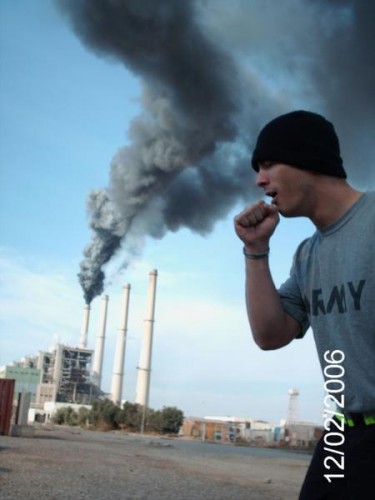The American Lung Association today released Toxic Air: The Case for Cleaning Up Coal-fired Power Plants, a new report that documents the range of hazardous air pollutants emitted from power plants and the urgent need to clean them up to protect public health. The report highlights the wide range of uncontrolled pollutants from these plants including: toxic metals and metal-like substances such as arsenic and lead; mercury; dioxins; chemicals known or thought to cause cancer, including formaldehyde, benzene and radioisotopes; and acid gases such as hydrogen chloride. The U.S. Environmental Protection Agency (EPA) is required to issue a proposal to cleanup this toxic pollution by March 16.
The report details the dangerous mix of toxic air pollutants that flow from the stacks of uncontrolled coal burning power plants and the adverse health effects associated with these pollutants. The report also discusses the technologies that are available for dramatically cutting these emissions—technologies that are commercially available and proven to work.
‘It’s time that we end the ‘toxic loophole’ that has allowed coal-burning power plants to operate without any federal limits on emissions of mercury, arsenic, dioxin, acid gases such as hydrogen chloride and other dangerous pollutants,’ said Charles D. Connor, president and CEO of the American Lung Association. ‘The American public has waited long enough—more than two decades. We are counting on EPA to protect all Americans from the health risks imposed by these dangerous pollutants once and for all.’
Key facts highlighted in the report:
* Coal-fired power plants produce more hazardous air pollution in the United States than any other industrial pollution sources;
* The Clean Air Act requires the control of hazardous air pollutants from coal-fired power plants, but absent these new rules, no national standards exist to limit these pollutants from these plants; and
* More than 400 coal-fired power plants located in 46 states across the country release in excess of 386,000 tons of hazardous air pollutants into the atmosphere each year.
‘People living closest to these plants, especially children, seniors and those with chronic disease, face the greatest risk, but it doesn’t stop there,’ said Connor. ‘Pollution from coal-fired power plants takes flight and travels far into other states—threatening public health.’
Many of these pollutants ‘hitchhike’ on the fine particulate matter, or particle pollution, that the power plants also produce. Particle pollution from power plants has been recently estimated to kill approximately 13,000 people a year. Most coal-fired plants are concentrated in the Midwest and Southeast.
Hazardous air pollutants are toxic emissions that are known or suspected to cause cancer or other serious health effects, such as reproductive problems or birth defects. People most at risk include: infants, children and teenagers; older adults; pregnant women; people with asthma and other lung diseases; people with cardiovascular disease; diabetics; people with low incomes; and healthy adults who work or exercise outdoors.
‘Power plant pollution kills people,’ said Connor. ‘It threatens the brains and nervous system of children. It can cause cancer, heart attacks and strokes.’
The report identified control technologies that are currently in use in some plants that are readily available for installation at other plants to curb these toxic emissions. This modern pollution control technology will reduce other lethal pollutants as well, including particle pollution. The law sets the cleanup requirements based on actual performance facilities, but each power plant will select the specific pollution control strategies to reduce their emissions.
‘Our report shows how critical this cleanup of acid gases, metals and other toxics is to public health,’ Connor added. ‘We need EPA to step up and safeguard Americans from toxic air pollution.’
The report is a summary of a technical analysis of these emissions prepared for the Lung Association by Environmental Health & Engineering, Inc. The Lung Association is also releasing the full analysis.
For more information or to download a copy of the report, please visit www.lungusa.org/ToxicAirReport.
